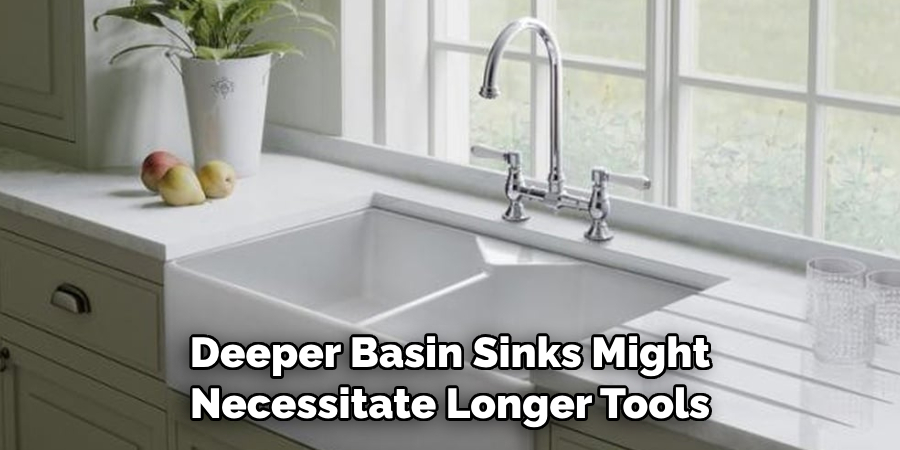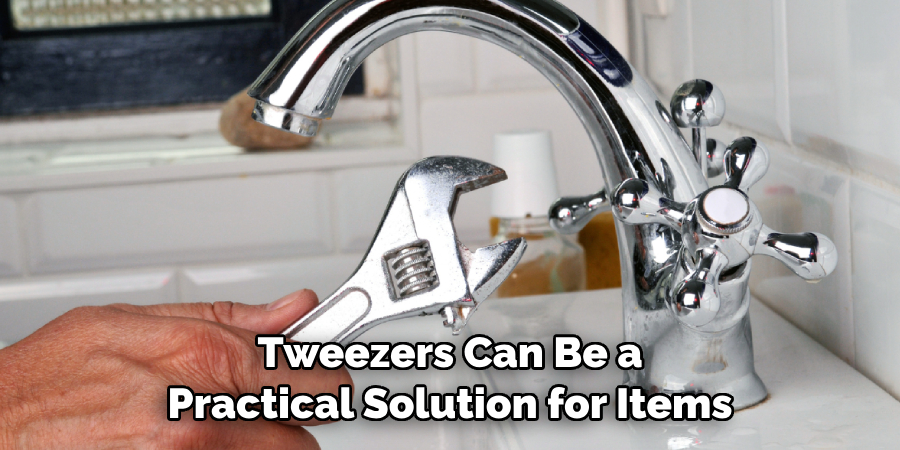Accidentally dropping an item down the sink can be a frustrating experience, but understanding the necessary steps can help mitigate potential plumbing issues. This article serves to explain how to get something that fell down the sink and highlights the importance of prompt retrieval to avoid clogs or damage.

Common items that often slip through our fingers include rings, utensils, small tools, or everyday household objects, many of which can easily become lodged in the plumbing system.
The article outlines several methods and tools to effectively retrieve these lost items, ranging from simple retrieval techniques to more involved processes like removing the P-trap. By following the guidance provided, readers will be better equipped to handle such situations with confidence and care.
Assess the Situation
Identify the Item
Understanding what item has fallen into the sink is crucial in determining the most effective retrieval method. For instance, a small and lightweight object like a ring may be easily retrieved using tweezers or a magnet, while a larger utensil might require a more robust approach such as using a plumbing snake or removing the P-trap. Identifying the size and material of the item can save time and prevent further complications during the retrieval process.
Determine the Sink Type
The type of sink plays a significant role in the retrieval process and the tools required. A standard kitchen sink may allow for easier access than a double sink, where both basins must be considered. Additionally, deeper basin sinks might necessitate longer tools, such as flexible grabbers, to reach items falling farther down. Assessing the sink type ensures that you can select the appropriate methods and tools for a successful retrieval.

Immediate Actions
Turn Off the Water Supply
The first critical step after an item has fallen into the sink is to turn off the water supply. This prevents the item from being pushed further down the drain or becoming stuck in the garbage disposal, which can lead to further complications and damage.
Avoid Using the Disposal
If you suspect that an item has fallen into the garbage disposal, refrain from using it. Engaging the disposal could damage the unit itself or ground up the lost item, making retrieval impossible.
Assess Accessibility
Next, assess the item’s accessibility. Check if it is visible in the drain or if you can reach it directly with your hand or a specialized tool. Knowing the item’s position allows you to plan your retrieval strategy effectively and choose the right method to proceed.
How to Get Something that Fell Down the Sink: Using Simple Retrieval Techniques
Step 1: Try Using a Magnet
If the item that fell down the sink is metallic, you can easily retrieve it using a magnet. Attach a strong magnet to the end of a flexible rod or a sturdy string. Carefully lower the magnet into the drain, ensuring it goes deep enough to reach the item without losing control. Gently wiggle the magnet to see if it can latch onto the object, providing a simple yet effective way to pull it back up.
Step 2: Use a Pair of Tongs or Tweezers
Using long, narrow tongs or tweezers can be a practical solution for items that are visible or easily reachable within the drain. Carefully maneuver the tool into the drain to grasp the object, ensuring you don’t push it further down. Keep your movements steady and deliberate to avoid losing your grip. This method works best for larger, less delicate items that are obstructing your view.

Step 3: Use a Flexible Grabber Tool
Consider using a flexible grabber or reacher tool when the item is out of reach. These handy devices extend into the drain, allowing you to maneuver around bends and retrieve otherwise inaccessible items. To use the grabber effectively, slowly insert it into the drain while gently squeezing the handles to open the claws and positioning them around the object before releasing them to secure it.
Step 4: Use a Wet-Dry Vacuum
If the object is near the top of the drain, a wet-dry vacuum can be an effective tool for retrieval. Start by setting the vacuum to liquid mode, then position the hose close to the drain opening. Turn on the vacuum to create suction, and watch closely to see if it can lift the item out. Be cautious with this method, as it’s best for small items that are not lodged deep within the plumbing.
Removing the P-Trap
Step 1: Gather Tools and Materials
Before you begin removing the P-trap, it’s essential to gather the necessary tools and materials. You will need a bucket to catch any water that spills out, pliers or adjustable wrenches to loosen the nuts, and some rags to clean up any mess. Having these items ready will make the process smoother and help prevent accidental spills.
Step 2: Place a Bucket Under the Sink
The next crucial step is to place a bucket or bowl under the sink. This is important as it will catch any water or debris that may spill out when you remove the P-trap. Plumbing systems can hold residual water, and failing to catch it can lead to a messy cleanup and potential water damage. Ensuring your workspace is prepared will make the removal process more manageable and safe.

Step 3: Loosen and Remove the Slip Nuts
To access the P-trap, you must first locate the slip nuts, which are typically found at both ends of the trap where it connects to the sink and the drainpipe. These nuts can often be loosened by hand, but if they are tight, you may need to use pliers or an adjustable wrench. Carefully grasp the slip nut and turn it counterclockwise to loosen it.
Make sure to do this gently to avoid damaging the plumbing fittings. Once both nuts are loose, you can carefully remove the P-trap from its position. Hold the trap steady as you remove it to avoid spilling any water that may still be inside. Once detached, inspect the interior of the P-trap for the item you are trying to retrieve.
Step 4: Retrieve the Item
With the P-trap removed, you can now retrieve the lost item. Gently shake or tip the trap if necessary, enabling the item to slide out. While at it, take this opportunity to clean the trap by removing any debris or buildup that has accumulated over time. Using a rag, wipe down the interior of the P-trap to ensure that it is free of obstructions and ready for reassembly.
Step 5: Reassemble the P-Trap
Once you have retrieved the item and cleaned the P-trap, it’s time to assemble everything. Start by positioning the P-trap back in place, ensuring that the connections align properly with the sink and drainpipe. Hand-tighten the slip nuts first to secure the trap, then use the pliers or wrench to give them a final snug turn, taking care not to overtighten—this can cause leaks. After reassembly, it’s a good idea to run water through the sink to check for any leaks and confirm that your plumbing system is functioning properly once again.

Using a Plumbing Snake or Auger
Step 1: Insert the Snake or Auger
To begin using a plumbing snake or auger, carefully insert the end of the tool into the drain. Aim to maneuver it gently down the pipe, maintaining a steady hand to avoid damaging the plumbing. Advance the tool until you feel resistance, indicating that you have reached the item.
Step 2: Rotate and Retrieve
Once the snake or auger is in position, rotate the handle to grasp or push the item toward the opening of the drain. This motion helps to secure the object, allowing you to pull it upwards. Slowly and firmly retract the tool, bringing the item with it to ensure a successful retrieval.
Step 3: Clean and Flush
After retrieving the item, it’s crucial to clean the drain area. Remove any debris that may have accumulated and flush the drain with water to clear out the remaining particles. This step ensures that your plumbing is free of obstructions, preventing future issues.
Preventing Future Incidents
Use Drain Covers
Installing drain covers or strainers is one of the most effective ways to prevent small objects from falling into the sink. These simple additions sit atop the drain, acting as a barrier that allows water to flow through while catching debris or items that might accidentally drop in. Regularly clean these covers to maintain proper drainage and ensure they function effectively, safeguarding against future retrieval challenges and keeping drains clear.
Be Cautious with Small Items
When handling small items near the sink, exercise caution. Consider keeping such items in a designated area away from the drainage zone to reduce the risk of them slipping from your grip. If you must work with them close to the sink, being mindful of your movements and employing a temporary holding container can significantly diminish the likelihood of accidents and ensure peace of mind while using the sink.
When to Call a Professional
Sometimes, despite your best efforts, retrieving an item proves too challenging. If the object cannot be retrieved using the methods described or if you notice any signs of damage to the plumbing system, such as leaks or unusual noises, it’s advisable to call a professional plumber. Dealing with persistent issues can lead to further complications, and a plumber has the experience and tools necessary to resolve the problem efficiently and safely.
Persistent Issues
If your attempts to retrieve the lost item have not been successful, do not hesitate to seek professional assistance. Ignoring persistent issues can worsen the situation, leading to increased repair costs. A qualified plumber will evaluate the situation thoroughly to determine the best course of action.

Complex Plumbing Systems
If the item has fallen deep into the plumbing or if you are dealing with a complex plumbing system, it’s best to rely on a professional. Specialized tools and expertise are often required to navigate intricate plumbing setups safely and effectively. You can avoid potential damage and ensure a successful retrieval by involving a plumber.
Conclusion
In summary, retrieving an item that has fallen into the sink can be achieved through several effective methods. You can start by using a plumbing snake or auger to fish the item out or remove the P-trap to access the blockage directly. Each method is complex, but most situations can be resolved with the right tools and techniques. Act quickly when an item is lost; timely intervention can prevent further complications and damage.
Always ensure that you are using the appropriate tools to maintain the integrity of your plumbing system. Should your efforts prove unsuccessful, do not hesitate to seek professional assistance. Whether you’re learning how to get something that fell down the sink or dealing with a more complex plumbing issue, expert help can ensure the best outcome for your home.

